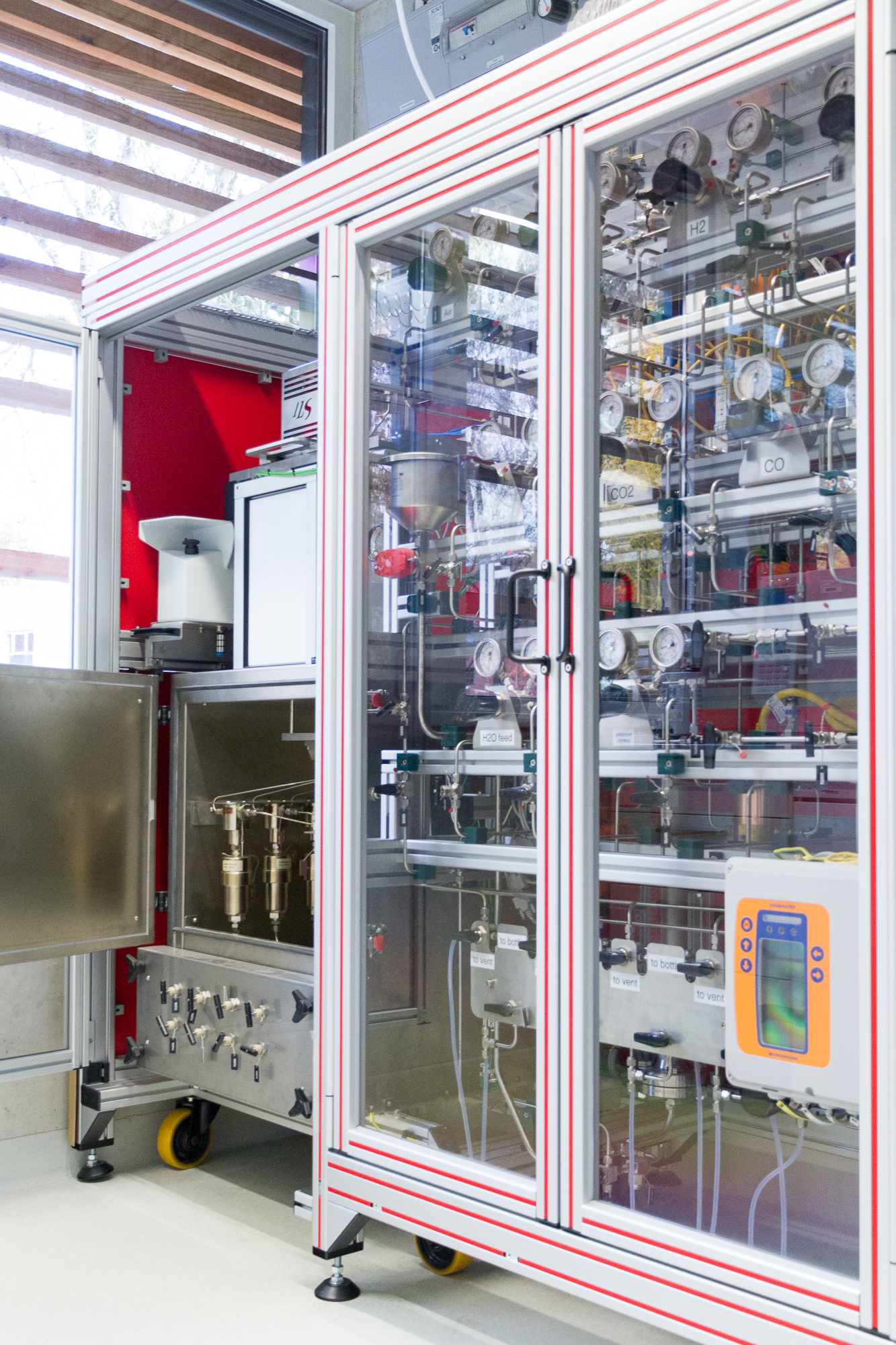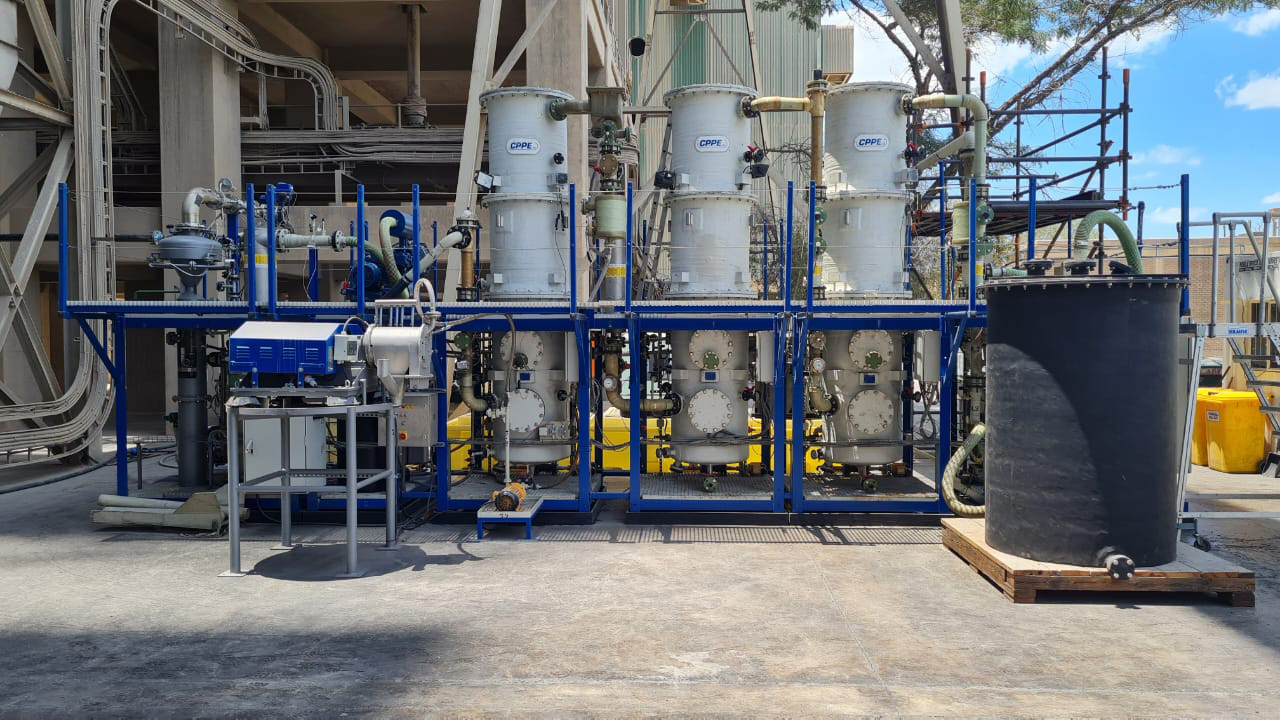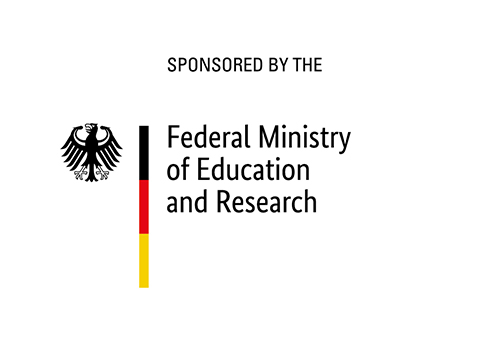South Africa's coal-fired power plants not only emit large quantities of CO₂, but also harmful nitrogen oxides (NOₓ), sulfur oxides (SOₓ) and particulate matter. To ensure that coal can be used in the most environmentally friendly way possible until the complete transition to renewable energies, the CoalCO₂-X™ program aims to harness the components of the flue gas for the circular production of products such as diesel and fertilizers. Green ammonia, the synthesis of which is being demonstrated by Fraunhofer IGB in Straubing, plays a key role here.
CoalCO2-XTM – Conversion of CO2 from South African coal-fired power plants using green ammonia and hydrogen


As a signatory of the COP21 Paris Climate Agreement, South Africa has committed to reduce its CO2 greenhouse gas emissions in all its industry sectors. In the Integrated Resource Plan 2019 [1] the Ministry of Mineral Resources and Energy set out ramping up the renewable energy production in parallel with decommissioning several fossil power plants.
Challenges in South Africa
In order to meet the high energy demand, some of the fossil-fired power sources covering the base-load will still play significant role in the energy supply even beyond 2030. Coal-fired plants in energy-, cement- and paper manufacturing sectors emit large quantities of greenhouse gas CO2 while the NOx, SOx and particulate matter cause severe health issues especially in the industrialized regions. Intensified agricultural activities in the last two decades boosted the demand for fertilizers. As domestic production lags behind due to aging infrastructure, South Africa imports more than 60 percent of the used nitrogen fertilizers [2].
South African-German program for climate protection
The South African Department of Science and Innovation (DSI) CoalCO2-XTM program, which is cofunded by the German Federal Ministry of Education and Research (BMBF), envisions decreasing the environmental footprint of hard-to-abate sectors, establishing circular economy processes by utilization of captured gases as raw material and finally, integrating renewable ammonia synthesis as key enabler for decarbonization of (agro)chemical and energy sectors.
Making flue gas usable
One part of the CoalCO2-XTM program is financed by the DSI of Republic of South Africa. Managed by EPCM Global Engineering, the first part of the program targets demonstrating the patented CPPE multipollutant capture and conversion technology at a scale of 300 m3/h for the removal of CO2, NOx and particulate matter from coal combustion flue gas at one of the production sites of PPC Cement SA and the conversion of CO2 into ammonium bicarbonate. Process development aims turning the captured gases into an unprecedented variety of products: synthetic Diesel fuel, marketable commodity chemicals such as ammonium bicarbonate, potassium carbonate, nitric acid and sulfuric acid, respectively. The multinational fertilizer company Omnia Holdings developed a marketable fertilizer formulation using converted inorganic salts.
Synthesis of green ammonia
The second part of the project is financed by the German BMBF. Managed by Fraunhofer IGB, this part focuses on piloting the renewable ammonia synthesis on the 1 kg/h scale in a low-pressure Haber Bosch reactor using electrolytic hydrogen produced at the premises of HySA (Hydrogen South Africa). Besides technical development and optimization of the process for intermittent operation, economic analysis will be carried out to support the upscaling efforts on renewable ammonia synthesis.
Using sulfuric acid obtained from the flue gas the produced ammonia will be further transformed into ammonium sulfate, a marketable commodity chemical and valuable fertilizer. Thus, the renewable hydrogen and ammonia is a link of key importance between the technologies developed within the program.
Industry partners sought for scale-up
Further phases of the CoalCO2-XTM program aim at upscaling of these technologies. Suitable industrial partners will be identified in South Africa and Germany to join the program. This will allow the South African economy, heavily dependent on coal, to use coal as a bridging technology in the most environmentally friendly way possible until the complete transition to a renewable energy and raw materials base.
References
[1] Integrated Resource Plan 2019, Department of Energy, Republic of South Africa, http://www.energy.gov.za/IRP/2019/IRP-2019.pdf
[2] South African fertilizers market analysis report 2019, Department of Agriculture, Forestry and Fisheries, Republic of South Africa
Project information
Project title
CoalCO2-XTM – Conversion of CO2 from South African coal-fired power plants into multiple commodity streams using green ammonia and hydrogen
Project duration
September 2022 – August 2025
Project partners
- JUCHHEIM Laborgeräte GmbH, Bernkastel-Kues, Germany
- HiTec Zang GmbH, Herzogenrath, Germany
- EPCM Global Engineering (Pty) Ltd, Centurion, South Africa
- PPC Cement SA (Pty) Ltd, Johannesburg, South Africa
- Carbon Process Plant and Engineering (CPPE) S. A. Rodange, Luxembourg
- Omnia Holdings Ltd, Monte circle office park, Sandton, South Africa
- HySA Infrastructure CoC, Potchefstroom, South Africa
- c*change, Rondebosch, South Africa
Project coordination
Fraunhofer IGB BioCat, Dr. Lénárd-István Csepei
- Programm manager of the German CLIENT-II Program of CoalCO2-XTM, Project manager of Fraunhofer subproject
- Co-Chair of the entireCoalCO2-XTM Program steering commitee (Geman and South African parts of the program)
EPCM Global Engineering (Pty) Ltd, Dr. Günther Hasse
- Programm manager of South African CoalCO2-XTM CLIENT-II Program
Funding
We would like to thank the German Federal Ministry of Research and Education (BMBF) and the DLR Projektträger Deutsches Zentrum für Luft- und Raumfahrt e. V. (German Aerospace Center) for funding the project "CoalCO2-XTM", promotional reference 01LZ2101A, within the "CLIENT II – Internationale Partnerschaften für nachhaltige Innovationen, Verbundprojekt Klimaschutz" program.
Furthermore, we would like to thank the Department of Science and Innovation (DSI) in South Africa for funding the program.

 Fraunhofer Institute for Interfacial Engineering and Biotechnology IGB
Fraunhofer Institute for Interfacial Engineering and Biotechnology IGB